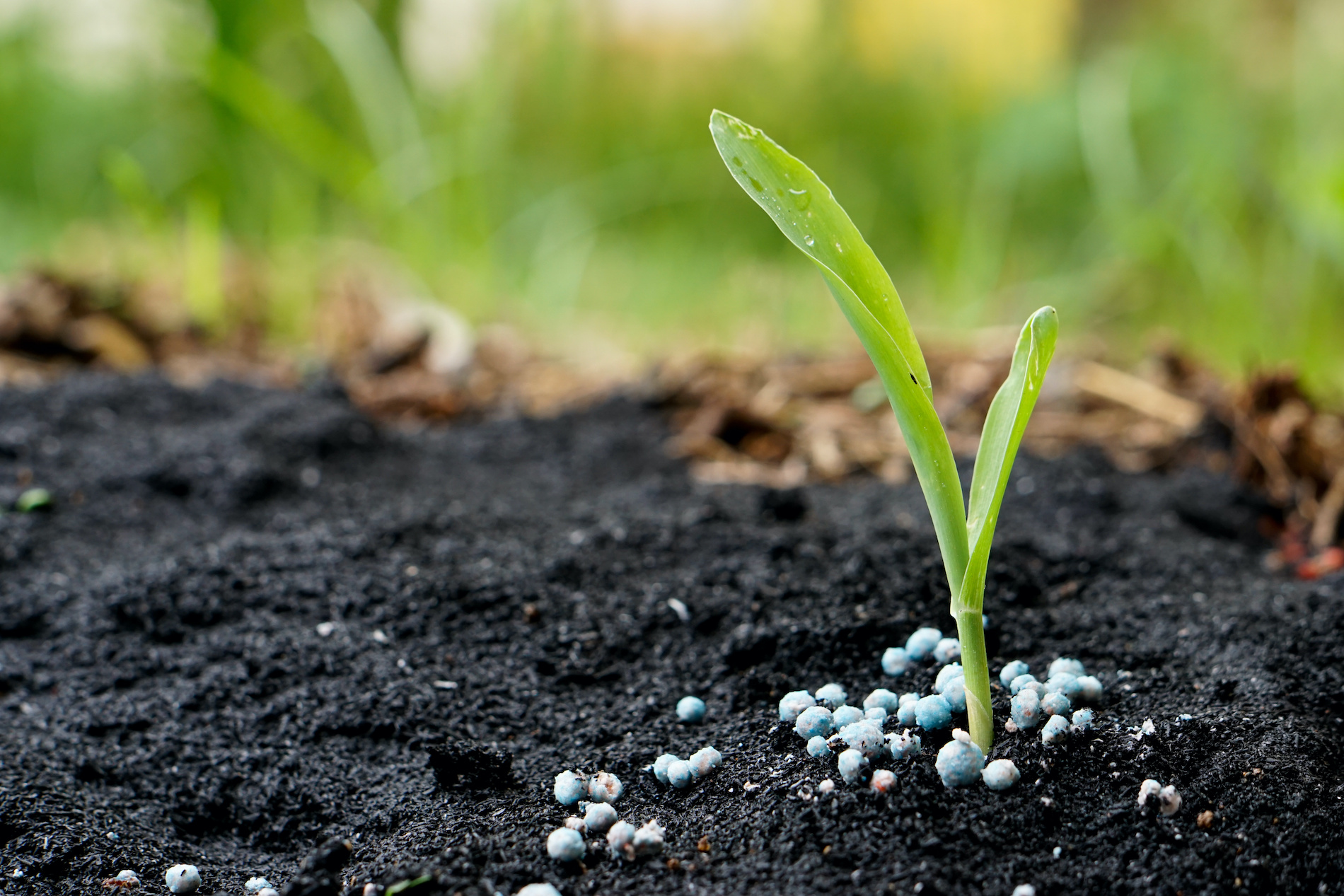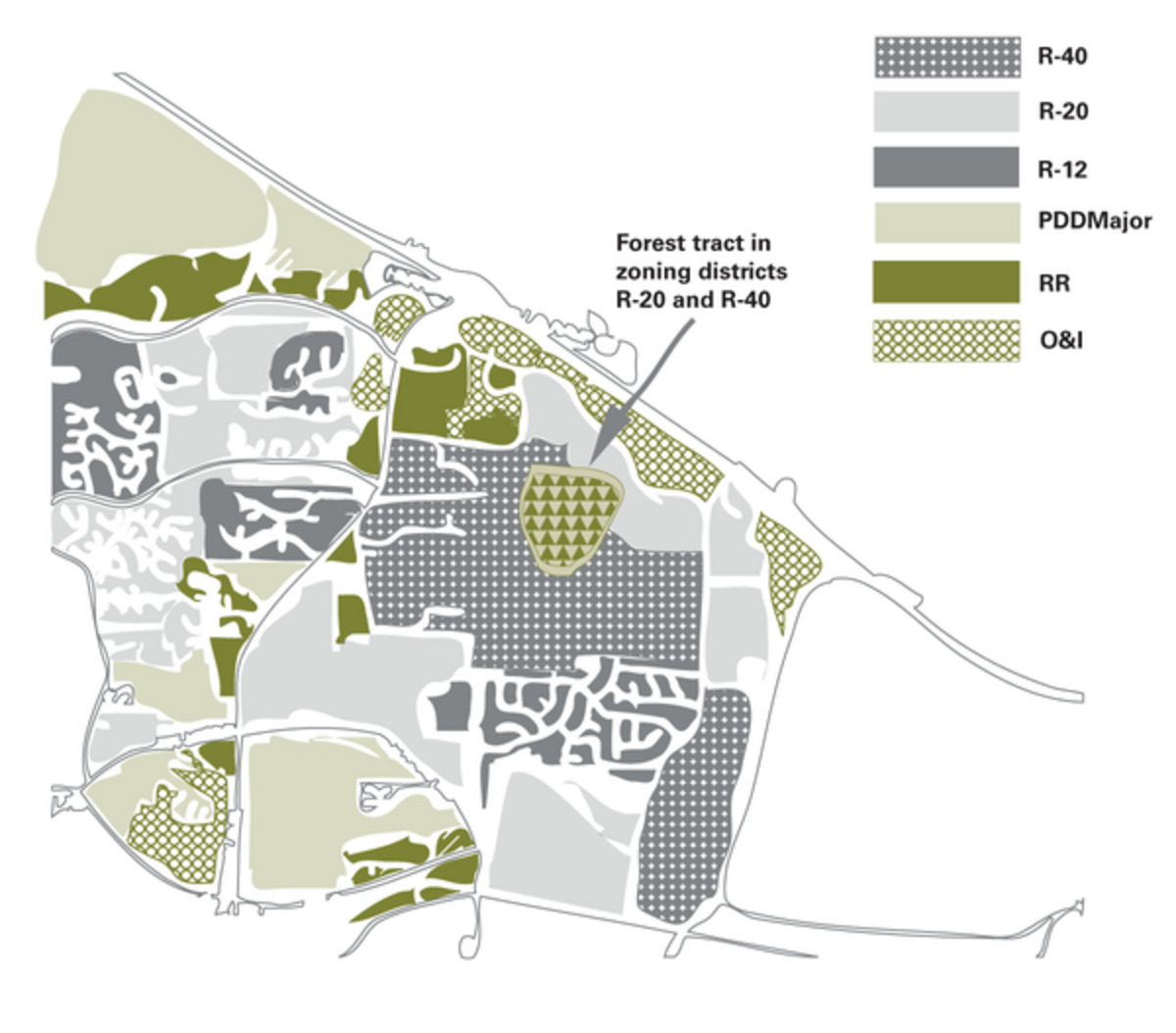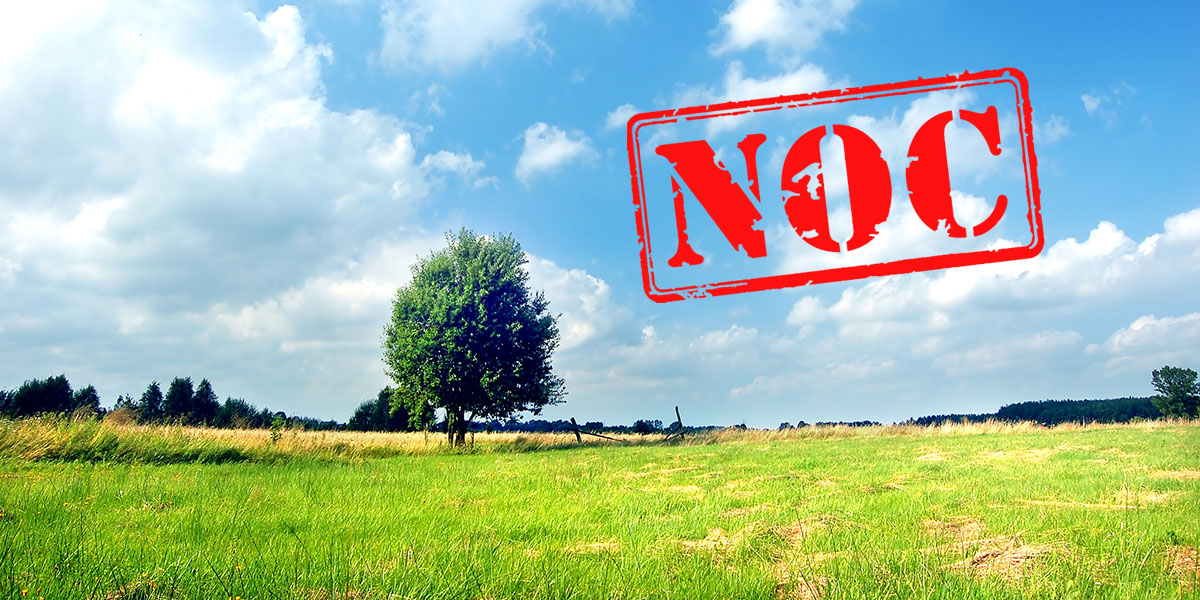

Articles
What Does Fertilizer Mean
Modified: October 20, 2024
Learn all about fertilizer in this informative article. Find out what fertilizer means and how it can benefit your garden.
(Many of the links in this article redirect to a specific reviewed product. Your purchase of these products through affiliate links helps to generate commission for Storables.com, at no extra cost. Learn more)
Introduction
Fertilizer is a crucial component in modern agriculture, playing a vital role in ensuring healthy and abundant crop production. Farmers and gardeners around the world rely on fertilizers to provide essential nutrients to the soil, thus enhancing plant growth and maximizing yields. But what exactly does the term “fertilizer” mean?
In simple terms, fertilizer refers to any substance or mixture of substances that is applied to the soil or plants to enrich their nutrient content. The goal of using fertilizers is to supplement the naturally occurring nutrients in the soil, providing plants with the necessary elements for optimal growth and development.
Fertilizers come in various forms, each designed to address specific nutrient deficiencies or enhance soil fertility. The choice of fertilizer type depends on factors such as the crop type, soil composition, and desired nutrient balance. Some common types of fertilizers include organic and inorganic varieties.
Key Takeaways:
- Fertilizers are essential for maximizing crop yields and ensuring food security, but their responsible use is crucial to minimize environmental impacts and promote sustainable agriculture.
- Organic and inorganic fertilizers offer unique benefits, and their proper application, timing, and nutrient balance are key to optimizing plant nutrition while minimizing negative environmental consequences.
Read more: What Does 20 20 20 Fertilizer Mean?
Definition of Fertilizer
Fertilizer is a substance or a combination of substances that are added to soil or plants to provide essential nutrients that are necessary for the growth and development of plants. These nutrients include macronutrients such as nitrogen (N), phosphorus (P), and potassium (K), as well as micronutrients like iron, zinc, and manganese. Fertilizers are used to supplement the nutrients that may be deficient in the soil, ensuring that plants have access to the optimal nutrient balance for healthy growth.
Fertilizers can be either organic or inorganic. Organic fertilizers are derived from natural sources such as animal manure, compost, and plant residues. They contain a variety of nutrients, as well as organic matter that improves soil structure and fertility. In contrast, inorganic fertilizers, also known as synthetic or chemical fertilizers, are manufactured through a chemical process. They are typically formulated to contain specific ratios of essential nutrients and provide readily available nutrients to plants.
Fertilizers are available in different forms, including granules, powders, liquids, and even slow-release pellets. Some fertilizers are designed for specific purposes, such as starter fertilizers that promote early growth or bloom boosters that enhance flower production. Fertilizers can be applied in various ways, including pre-planting, top-dressing, side-dressing, and foliar spraying, depending on the crop’s growth stage and nutrient requirements.
The use of fertilizers has revolutionized agriculture, allowing farmers to maximize their crop yields and feed an ever-growing population. By enhancing soil fertility and replenishing nutrients, fertilizers help plants develop robust root systems, vigorous foliage, and abundant blooms or fruits. They play a critical role in providing plants with the necessary resources to withstand environmental stressors, resist pests and diseases, and produce high-quality crops.
However, it is essential to use fertilizers judiciously and in accordance with recommended guidelines. Over-application of fertilizers can lead to nutrient imbalances, environmental pollution, and harm to ecosystems. It is crucial to understand the specific nutrient requirements of crops, conduct soil tests to assess nutrient deficiencies, and follow proper application techniques to ensure effective and sustainable fertilizer use.
In the next sections, we will delve deeper into the various types of fertilizers, their benefits, potential environmental impacts, and best practices for their usage. Understanding the different aspects of fertilizers will enable farmers and gardeners to make informed decisions and promote sustainable and responsible agricultural practices.
Types of Fertilizer
Fertilizers can be broadly classified into two categories: organic fertilizers and inorganic fertilizers. Each category has its own unique characteristics and benefits, which make them suitable for different agricultural practices.
Organic Fertilizers
Organic fertilizers are derived from natural sources such as animal manure, compost, and plant residues. They are a preferred choice for many farmers and gardeners who prioritize organic and sustainable farming practices. Organic fertilizers provide a range of nutrients, including nitrogen, phosphorus, potassium, and micronutrients, in a slow-release form. This means that the nutrients are released gradually over time, ensuring a steady and long-lasting supply to the plants. In addition to providing nutrients, organic fertilizers also improve soil structure, water-holding capacity, and microbial activity, thus promoting overall soil health.
Some common examples of organic fertilizers include:
- Manure: Animal manure, such as cow dung, poultry litter, and horse manure, is rich in nutrients and organic matter.
- Compost: Compost is a nutrient-rich organic material that is created by the decomposition of plant and animal waste.
- Bone Meal: Bone meal is made from ground animal bones and is a good source of phosphorus and calcium.
- Fish Emulsion: Fish emulsion is a liquid fertilizer made from fermented fish waste and contains nitrogen, phosphorus, and trace elements.
- Seaweed Extract: Seaweed extract is derived from marine plants and is a natural source of micronutrients, growth hormones, and beneficial plant compounds.
Inorganic Fertilizers
Inorganic fertilizers, also known as synthetic or chemical fertilizers, are manufactured through a chemical process. They are formulated to contain specific ratios of essential nutrients and provide readily available nutrients to plants. Inorganic fertilizers typically have a higher nutrient concentration compared to organic fertilizers, making them a convenient choice for crops with high nutrient requirements or when a quick nutrient boost is needed. Some common examples of inorganic fertilizers include:
- Nitrogen Fertilizers: Nitrogen fertilizers are rich in nitrogen and help promote vegetative growth. Examples include ammonium nitrate, urea, and ammonium sulfate.
- Phosphorus Fertilizers: Phosphorus fertilizers supply plants with phosphorus, which is crucial for root development, flowering, and fruiting. Examples include superphosphate and triple superphosphate.
- Potassium Fertilizers: Potassium fertilizers provide plants with potassium, which is essential for overall plant health, disease resistance, and stress tolerance. Examples include potassium chloride and potassium sulfate.
- Compound Fertilizers: Compound fertilizers contain a combination of nitrogen, phosphorus, and potassium in varying ratios. They are specifically formulated to meet the nutrient requirements of different crops at various growth stages.
- Micro-nutrient Fertilizers: Micro-nutrient fertilizers supply essential trace elements like iron, zinc, manganese, copper, and boron, which are required in small quantities for healthy plant growth.
While inorganic fertilizers provide quick and targeted nutrient supply, it is important to use them responsibly and in accordance with recommended rates. Excessive use of inorganic fertilizers can lead to nutrient runoff, water pollution, and soil degradation. It is crucial to carefully monitor plant nutrient requirements, conduct soil tests, and apply fertilizers judiciously to ensure optimal plant nutrition and minimize environmental impact.
Understanding the different types of fertilizers allows farmers and gardeners to choose the most suitable options based on their specific needs, crops, and environmental considerations. A balanced and well-informed approach to fertilizer selection contributes to sustainable agriculture and healthier ecosystems.
Organic Fertilizers
Organic fertilizers are a natural and sustainable alternative to synthetic fertilizers. They are derived from organic sources such as plant residues, animal manure, and compost. Organic fertilizers not only provide essential nutrients to plants but also improve soil health and fertility, promoting long-term sustainable agriculture practices.
One of the key benefits of organic fertilizers is their slow-release nature. Unlike synthetic fertilizers, which release nutrients quickly, organic fertilizers release nutrients slowly over time. This gradual release ensures a consistent supply of nutrients to plants, reducing the risk of nutrient leaching and ensuring efficient utilization by plants.
Organic fertilizers also improve soil structure and enhance its water-holding capacity. They contain organic matter, which acts as a soil conditioner, improving soil texture and promoting beneficial microbial activity. This results in improved nutrient retention, better water infiltration, and increased soil fertility, leading to healthier root systems and overall plant growth.
There are various types of organic fertilizers available, each with its own specific benefits:
- Animal Manure: Animal manure, such as cow dung, poultry droppings, and horse manure, is a rich source of organic matter and nutrients. It provides nitrogen, phosphorus, potassium, and other essential elements to the soil. Before using animal manure as fertilizer, it is important to compost or decompose it properly to minimize the risk of weed seeds or pathogens.
- Compost: Compost is created by decomposing organic matter like plant residues, kitchen scraps, and yard waste. It is a nutrient-rich soil amendment that improves soil structure, enhances nutrient availability, and promotes beneficial microbial activity. Compost can be made at home or purchased commercially.
- Bone Meal: Bone meal is made from finely ground animal bones and is an excellent source of phosphorus and calcium. It provides slow-release nutrients that promote root development and overall plant growth. Bone meal is commonly used in organic gardening, particularly for flowering plants.
- Fish Emulsion: Fish emulsion is a liquid fertilizer made from fermented fish waste. It is a rich source of nitrogen, phosphorus, and trace elements. Fish emulsion is a quick-release fertilizer that provides an immediate nutrient boost to plants. It is often used in organic gardening as a foliar spray or soil drench.
- Seaweed Extract: Seaweed extract is derived from various species of seaweed and is rich in trace elements, growth hormones, and beneficial plant compounds. It enhances plant growth, improves stress tolerance, and stimulates root development. Seaweed extract is available in liquid form and can be used as a foliar spray or soil drench.
When using organic fertilizers, it is important to follow the recommended rates and application methods. Over-application of organic fertilizers can lead to nutrient imbalances and potential environmental pollution. Conducting soil tests, understanding the nutrient requirements of specific crops, and using organic fertilizers in conjunction with other sustainable practices, such as crop rotation and cover cropping, can maximize their effectiveness and minimize any negative impacts.
Organic fertilizers offer a natural and eco-friendly approach to plant nutrition. By incorporating these fertilizers into farming and gardening practices, farmers and gardeners can support healthy soil ecosystems, reduce the use of synthetic chemicals, and promote sustainable food production.
Inorganic Fertilizers
Inorganic fertilizers, also known as synthetic or chemical fertilizers, are chemically formulated to provide specific nutrients to plants. They are widely used in modern agriculture due to their high nutrient concentration and quick-release properties. Inorganic fertilizers are manufactured through industrial processes, ensuring a consistent and reliable nutrient supply for crops.
One of the main advantages of inorganic fertilizers is their ability to provide readily available nutrients to plants. Unlike organic fertilizers that need to decompose and release nutrients over time, inorganic fertilizers are formulated to be water-soluble. This allows the nutrients to be easily absorbed by plant roots, providing a rapid boost of essential elements for growth and development.
There are different types of inorganic fertilizers, each designed to supply specific nutrients to plants:
- Nitrogen Fertilizers: Nitrogen is a vital nutrient for plant growth and is responsible for promoting leafy green foliage. Nitrogen fertilizers are rich in nitrogen content and are commonly used to enhance vegetative growth. Examples include ammonium nitrate, urea, and ammonium sulfate.
- Phosphorus Fertilizers: Phosphorus is essential for root development, flowering, and fruit production. Phosphorus fertilizers provide plants with the necessary phosphorus content. Examples include superphosphate and triple superphosphate.
- Potassium Fertilizers: Potassium is crucial for overall plant health, disease resistance, and stress tolerance. Potassium fertilizers supply plants with potassium to meet their nutritional needs. Examples include potassium chloride and potassium sulfate.
- Compound Fertilizers: Compound fertilizers contain a balanced combination of nitrogen, phosphorus, and potassium in varying ratios. These fertilizers are formulated to cater to the specific nutrient requirements of different crops at various growth stages.
- Micro-nutrient Fertilizers: Micro-nutrient fertilizers supply trace elements such as iron, zinc, manganese, copper, and boron. These elements are required in small quantities but are essential for healthy plant growth and development.
Inorganic fertilizers offer several advantages, including their precise nutrient composition, high nutrient content, and fast-acting nature. They allow farmers to efficiently address nutrient deficiencies and promote optimal plant growth. Additionally, inorganic fertilizers can be easily applied and are available in various forms such as granules, powders, and liquids, allowing for flexibility in application methods.
However, it is crucial to use inorganic fertilizers responsibly to avoid negative environmental impacts. Overuse or misapplication of inorganic fertilizers can lead to nutrient runoff, water pollution, and harm to ecosystems. It is essential to follow recommended application rates, avoid excessive use, and consider factors such as soil conditions, crop requirements, and environmental considerations.
Incorporating sustainable practices alongside the use of inorganic fertilizers can help mitigate potential risks. These practices include soil testing, precision application methods, nutrient management planning, and adopting integrated pest management strategies. By using inorganic fertilizers judiciously and in conjunction with sustainable approaches, farmers can optimize plant nutrition while minimizing environmental impact.
Both organic and inorganic fertilizers have their own advantages and considerations. Making informed decisions about fertilizer usage based on crop requirements, soil conditions, and sustainability goals can lead to effective and responsible fertilizer application, contributing to healthier crops, improved yields, and sustainable agricultural practices.
Importance of Fertilizers in Agriculture
Fertilizers play a crucial role in modern agriculture, where high crop yields and optimal plant growth are essential for food production and sustainability. Here are some key reasons why fertilizers are important in agriculture:
- Nutrient Supplementation: Fertilizers provide essential nutrients that may be deficient in the soil. These nutrients include macronutrients like nitrogen (N), phosphorus (P), and potassium (K), as well as micronutrients like iron, zinc, and manganese. By supplementing the nutrient content of the soil, fertilizers ensure that plants have access to the required nutrients for their growth and development.
- Increased Crop Yields: Fertilizers enhance plant growth, which directly translates to higher crop yields. Nutrient deficiencies can limit plant growth and reduce yield potential. By supplying the necessary nutrients, fertilizers promote healthy root development, vigorous foliage growth, and abundant flower or fruit production. This results in larger, healthier crops and increased agricultural productivity.
- Improved Nutrient Efficiency: Fertilizers help improve nutrient utilization by plants. They provide nutrients in accessible forms and precise ratios, maximizing nutrient uptake and minimizing wastage. This improves the efficiency of nutrient utilization, reducing nutrient losses to the environment and ensuring that plants can fully utilize the available nutrients for their growth.
- Quick Nutrient Availability: Inorganic fertilizers, in particular, provide quick-release nutrients to plants. This rapid nutrient availability is especially beneficial during critical growth periods or in situations where plants require an immediate nutrient boost. Quick-release fertilizers are also useful for crops with high nutrient demands or when soil conditions are not optimal for nutrient availability.
- Soil Fertility Enhancement: Fertilizers contribute to soil fertility improvement. They replenish nutrients that are depleted through crop uptake and leaching, ensuring that the soil remains fertile and capable of supporting healthy plant growth. Fertilizers also help improve soil structure, water retention, and microbial activity, promoting overall soil health and sustainability.
- Adaptability and Precision: Fertilizers offer flexibility and precision in meeting specific crop nutrient requirements. Different crops have varying nutrient needs at different stages of growth. Fertilizers allow farmers to adjust nutrient application rates and use different formulations tailored to the specific needs of different crops, ensuring optimal nutrition and maximizing productivity.
- Weather Resilience: Fertilizers can help crops withstand adverse weather conditions. Nutrient-rich plants are generally more resilient to drought, heat stress, and disease. Fertilizers promote stronger root systems, which improve water and nutrient uptake. This helps plants tolerate environmental stresses and enables them to overcome weather-related challenges.
While fertilizers offer significant benefits to agriculture, it is crucial to use them responsibly. Sustainable fertilization practices involve careful nutrient management, soil testing, and following recommended application rates. Proper fertilizer use ensures that the benefits are maximized while minimizing potential environmental impacts, such as nutrient runoff and water pollution.
Overall, fertilizers are a vital component of modern agricultural practices. They help ensure that crops receive the necessary nutrients for optimal growth and production. By utilizing fertilizers effectively and responsibly, farmers can enhance crop yields, improve soil fertility, and contribute to sustainable and efficient food production for a growing global population.
Fertilizer is a substance added to soil to improve plant growth. It provides essential nutrients like nitrogen, phosphorus, and potassium. Always follow the recommended application rates to avoid over-fertilization.
Environmental Impact of Fertilizer Use
While fertilizers are essential for promoting crop growth and maximizing agricultural productivity, their use can have significant environmental implications. Here are some key environmental impacts associated with fertilizer use:
- Nutrient Runoff: One of the primary concerns with fertilizer use is the potential for nutrient runoff. When fertilizers are applied in excess or during heavy rains, the nutrients can be washed away from fields and enter nearby water bodies. This runoff can lead to eutrophication, a process in which excessive nutrients cause algae blooms, deplete oxygen levels, and harm aquatic ecosystems.
- Water Pollution: Nutrient runoff from fertilizers can contaminate water sources, including rivers, lakes, and groundwater. The increased nutrient levels can disrupt the natural balance of aquatic ecosystems, leading to reduced water quality and harmful impacts on fish, plants, and other aquatic organisms. Excessive nitrogen in water bodies can also contribute to the formation of harmful algal blooms, which can release toxins and pose risks to human and animal health.
- Air and Climate Impacts: Ammonia emissions can result from the use of nitrogen-based fertilizers. Ammonia released into the air can contribute to air pollution and have detrimental effects on human health. Additionally, nitrous oxide (N2O) is a potent greenhouse gas that is released during the microbial breakdown of nitrogen fertilizers in the soil. Nitrous oxide is a significant contributor to global warming and climate change.
- Soil Degradation: Improper use of fertilizers, such as over-application or inappropriate timing, can lead to soil degradation. Excessive fertilization can alter soil pH, nutrient ratios, and microbial activity, leading to nutrient imbalances, reduced soil fertility, and decreased biodiversity. This degradation can result in long-term damage to soil productivity and the overall health of agroecosystems.
- Loss of Biodiversity: The environmental impacts of fertilizer use can extend beyond crop fields. Excess nutrients from fertilizers can leach into natural habitats, damaging or altering ecosystems. Nutrient enrichment promotes the growth of nutrient-demanding species, leading to a loss of biodiversity and alterations in species composition. The negative effects on biodiversity can have cascading impacts on ecological processes and ecosystem stability.
- Energy Consumption and Greenhouse Gas Emissions: The production, transportation, and application of fertilizers require energy inputs and can contribute to greenhouse gas emissions. Fertilizer production processes, such as the production of nitrogen fertilizers, are energy-intensive and rely on fossil fuels. The associated emissions can contribute to climate change and related environmental concerns.
To mitigate the environmental impact of fertilizer use, it is essential to adopt sustainable fertilizer management practices. Some strategies include:
- Using precision agriculture techniques to apply fertilizers more accurately and efficiently, minimizing excess application and reducing the risk of nutrient runoff.
- Implementing nutrient management plans that consider soil nutrient levels, crop requirements, and environmental factors to optimize fertilizer use.
- Utilizing slow-release or controlled-release fertilizers that release nutrients gradually, reducing the risk of nutrient leaching and maximizing nutrient uptake by plants.
- Practicing crop rotation and cover cropping to improve soil fertility naturally, reduce the need for excessive fertilizer use, and enhance nutrient cycling.
- Adopting conservation practices such as buffer zones, vegetative barriers, and optimized irrigation methods to mitigate nutrient runoff and protect water bodies.
- Investing in research and development for sustainable fertilizers and soil management practices, including innovations in nutrient recycling and organic fertilizer alternatives.
By implementing these practices, farmers can minimize the environmental impact of fertilizer use and promote sustainable agricultural systems that protect water quality, preserve biodiversity, and mitigate climate change. Responsible fertilizer management is essential for balancing the need to maximize agricultural productivity while minimizing the negative consequences on the environment.
Read more: What Does Chandelier Mean
Proper Usage and Application of Fertilizers
To harness the benefits of fertilizers while minimizing their environmental impact, it is essential to follow proper usage and application practices. Here are some key guidelines for the proper usage and application of fertilizers:
- Soil Testing: Conduct regular soil tests to assess nutrient levels and pH. Soil tests provide valuable information about the specific nutrient requirements of your crops. This helps determine the appropriate fertilizer type, formulation, and application rates necessary to achieve optimal plant nutrition and avoid over-fertilization.
- Follow Recommended Rates: Apply fertilizers at recommended rates based on soil test results and crop nutrient requirements. Over-application of fertilizers can lead to nutrient imbalances, waste, and environmental pollution. Applying the right amount of fertilizer ensures that plants receive adequate nutrients without negatively impacting the environment.
- Timing and Placement: Consider the stage of crop growth and nutrient uptake patterns to time fertilizer applications appropriately. Different crops have varying nutrient demands throughout their growth stages. Apply fertilizers when the demand for specific nutrients is highest. Additionally, consider the placement method – whether it is surface application, incorporation into the soil, or fertigation – to ensure optimized nutrient availability to the plants.
- Nutrient Balance: Pay attention to the nutrient ratios when choosing fertilizers. Different crops require different proportions of nutrients. Consider the specific nutrient needs of your crops and select fertilizers with appropriate nutrient ratios to avoid nutrient imbalances or deficiencies.
- Use Slow-release Fertilizers: Consider using slow-release or controlled-release fertilizers. These fertilizers release nutrients gradually over time, providing a steady supply of nutrients to plants and reducing the risk of nutrient leaching. Slow-release fertilizers can improve nutrient use efficiency, reduce the need for frequent applications, and minimize environmental impacts.
- Account for Nutrient Sources: Take into account the contributions from other nutrient sources, such as organic matter, cover crops, or nutrient-rich soil amendments. Organic matter and sustainable farming practices can help improve soil fertility and reduce the reliance on synthetic fertilizers. Incorporating nutrient sources other than fertilizers promotes nutrient cycling and enhances the overall health and resilience of the agroecosystem.
- Monitor and Adapt: Regularly monitor crop performance, soil conditions, and nutrient levels to evaluate the effectiveness of fertilization practices. Adjust fertilizer rates and timings as needed based on the observed crop response, soil test results, and changing environmental conditions. Monitoring helps optimize nutrient management and fine-tune fertilization practices over time.
- Avoid Excess Runoff: Prevent nutrient runoff by avoiding fertilizer application on steep slopes, near water bodies, or during heavy rainfall. Implement buffer zones, cover crops, or other forms of conservation practices to minimize nutrient loss and protect water quality.
Proper storage and handling of fertilizers are also essential. Store fertilizers in a dry and secure location to prevent nutrient loss, contamination, or accidental spills. Follow local regulations and best practices for the safe handling and disposal of fertilizers to minimize any negative impacts.
By adhering to these guidelines, farmers can optimize the effectiveness of fertilizer use, reduce the risk of environmental pollution, and promote sustainable agricultural practices. Responsible fertilizer usage contributes to improved crop yields, enhanced soil fertility, and the long-term preservation of natural resources.
Conclusion
Fertilizers are an integral part of modern agriculture, serving as a vital tool to support healthy crop growth and maximize agricultural productivity. They provide the essential nutrients that are necessary for plants to thrive and produce abundant yields. Whether using organic or inorganic fertilizers, farmers and gardeners can tailor their fertilizer choices to meet the specific needs of their crops and optimize nutrient availability.
Organic fertilizers offer a natural and sustainable approach, enriching the soil with organic matter and nutrients while enhancing soil health and biodiversity. Inorganic fertilizers, on the other hand, provide quick-release nutrients that rapidly address nutrient deficiencies in crops. Both types of fertilizers have their benefits and considerations, and their usage should be guided by proper nutrient management practices and sustainability goals.
>
While fertilizers play a critical role in ensuring food security and meeting the demands of a growing population, they also have environmental consequences that must be taken into account. Proper usage and application of fertilizers are crucial in minimizing these impacts. Soil testing, following recommended rates, timing applications according to crop needs, and practicing nutrient balance are all essential steps to optimize fertilizer use and minimize environmental pollution.
>
Key considerations for sustainable fertilizer use include reducing nutrient runoff, preserving water quality, mitigating greenhouse gas emissions, and maintaining soil health. By adopting precision agriculture techniques, implementing nutrient management plans, embracing conservation practices, and exploring alternative fertilizers, farmers can strike a balance between productivity and environmental stewardship.
>
In conclusion, fertilizers are a fundamental tool for modern agriculture, enabling farmers to maximize crop yields, enhance soil fertility, and sustainably meet the demands of a growing population. Careful and responsible fertilizer management practices are necessary to mitigate potential environmental impacts and ensure the long-term sustainability of our agricultural systems. By embracing best practices and staying informed about innovations in fertilizer technology, farmers and gardeners can continue to cultivate healthy crops while protecting our precious natural resources for future generations.
>
Frequently Asked Questions about What Does Fertilizer Mean
Was this page helpful?
At Storables.com, we guarantee accurate and reliable information. Our content, validated by Expert Board Contributors, is crafted following stringent Editorial Policies. We're committed to providing you with well-researched, expert-backed insights for all your informational needs.














0 thoughts on “What Does Fertilizer Mean”